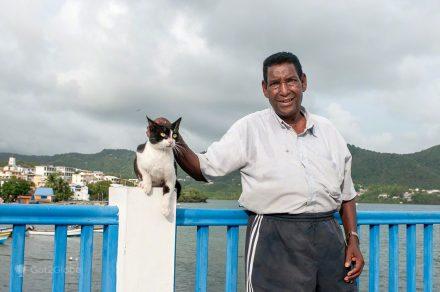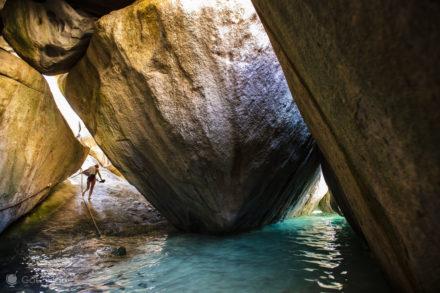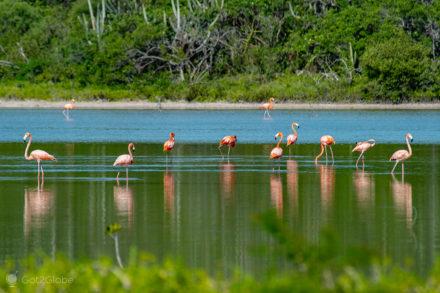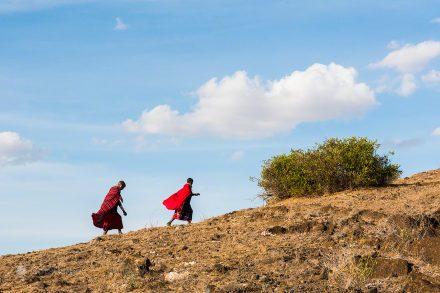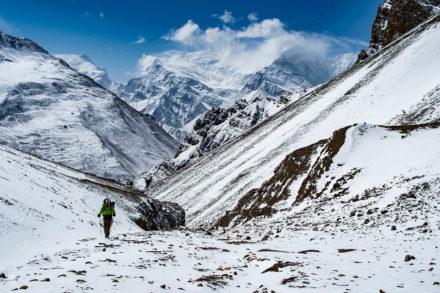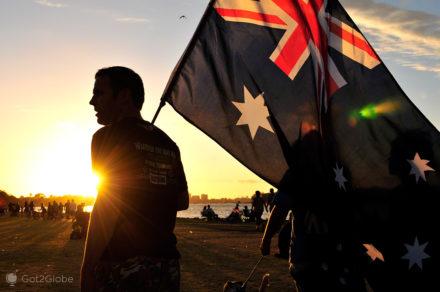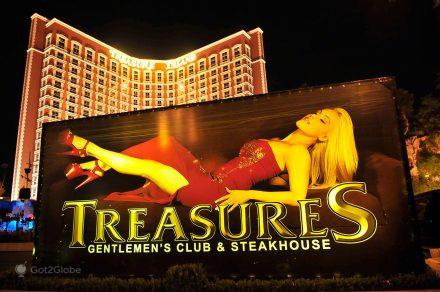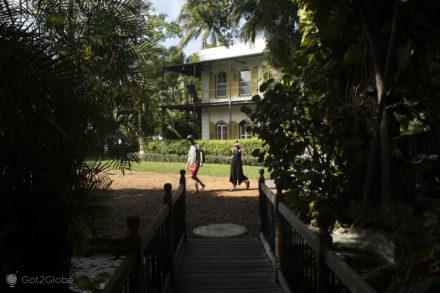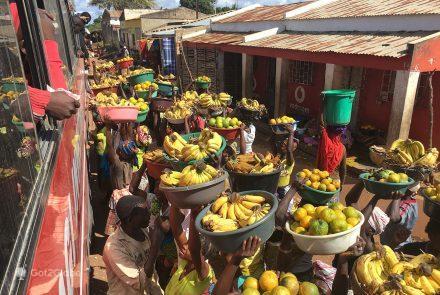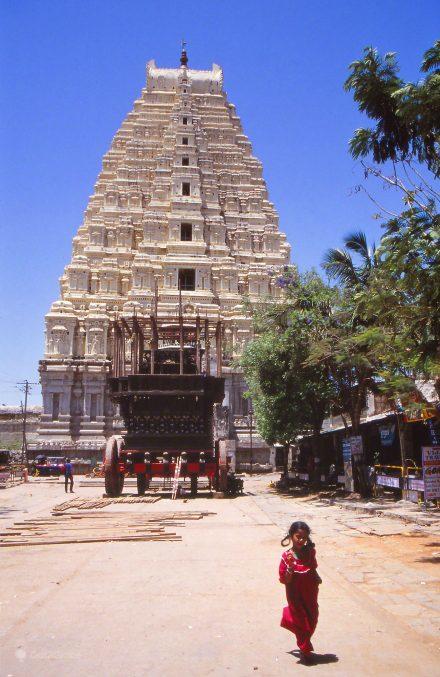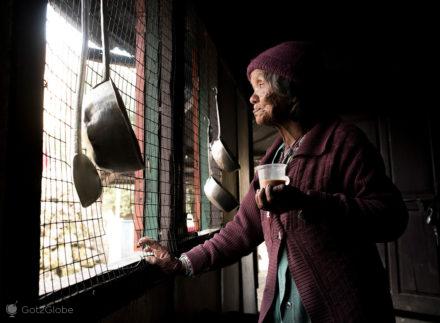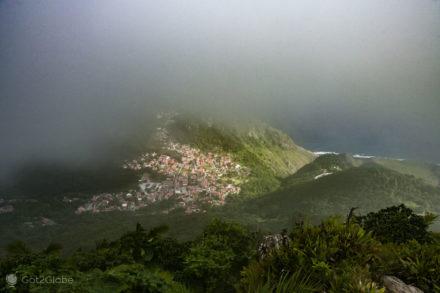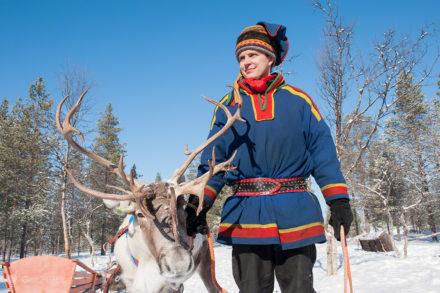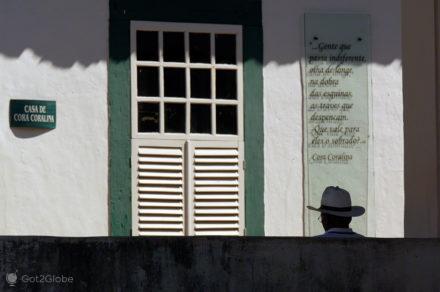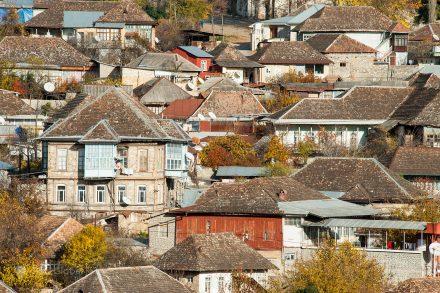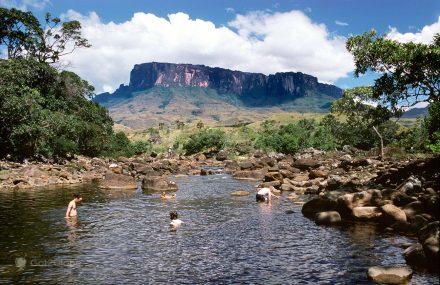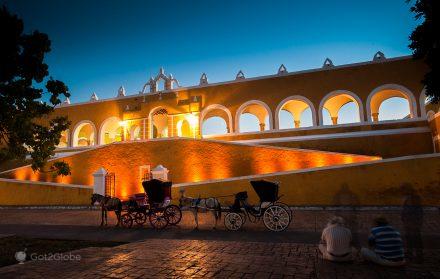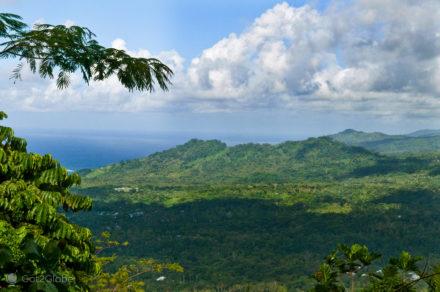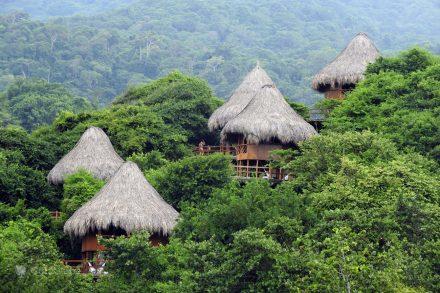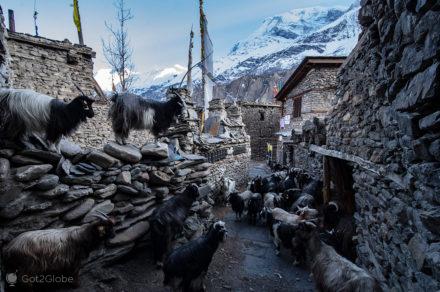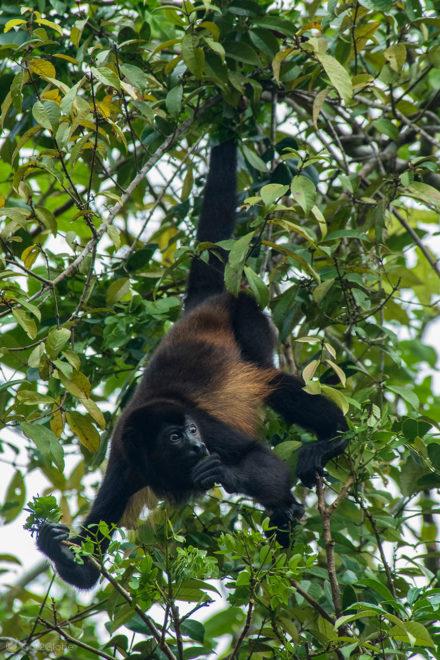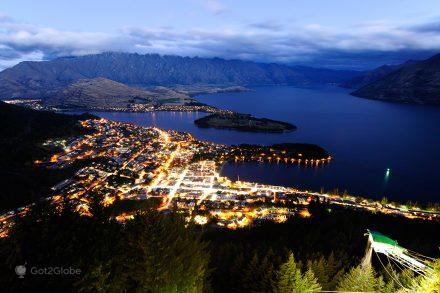Traditional fishing takes place in the Grande Anse d'Anses-d'Arlets, one of the many jagged coves in Martinique.
A small audience joins intrigued by the unorthodox methods of the task. Fishermen on a small boat drop a net into the water which they mold into a circle.
Thus, they imprison countless fish than one other, equipped with snorkeling dips to fix and capture.
The cove from which we enjoy the scene is also a small haven. Entire families of meters (French from the metropolis) occupy the end of the longest pier or follow the action from the deck of their sailboats.
Some are from Nantes, others from Marseilles and still others from Corsica.
They share the privilege of traveling with the winds.
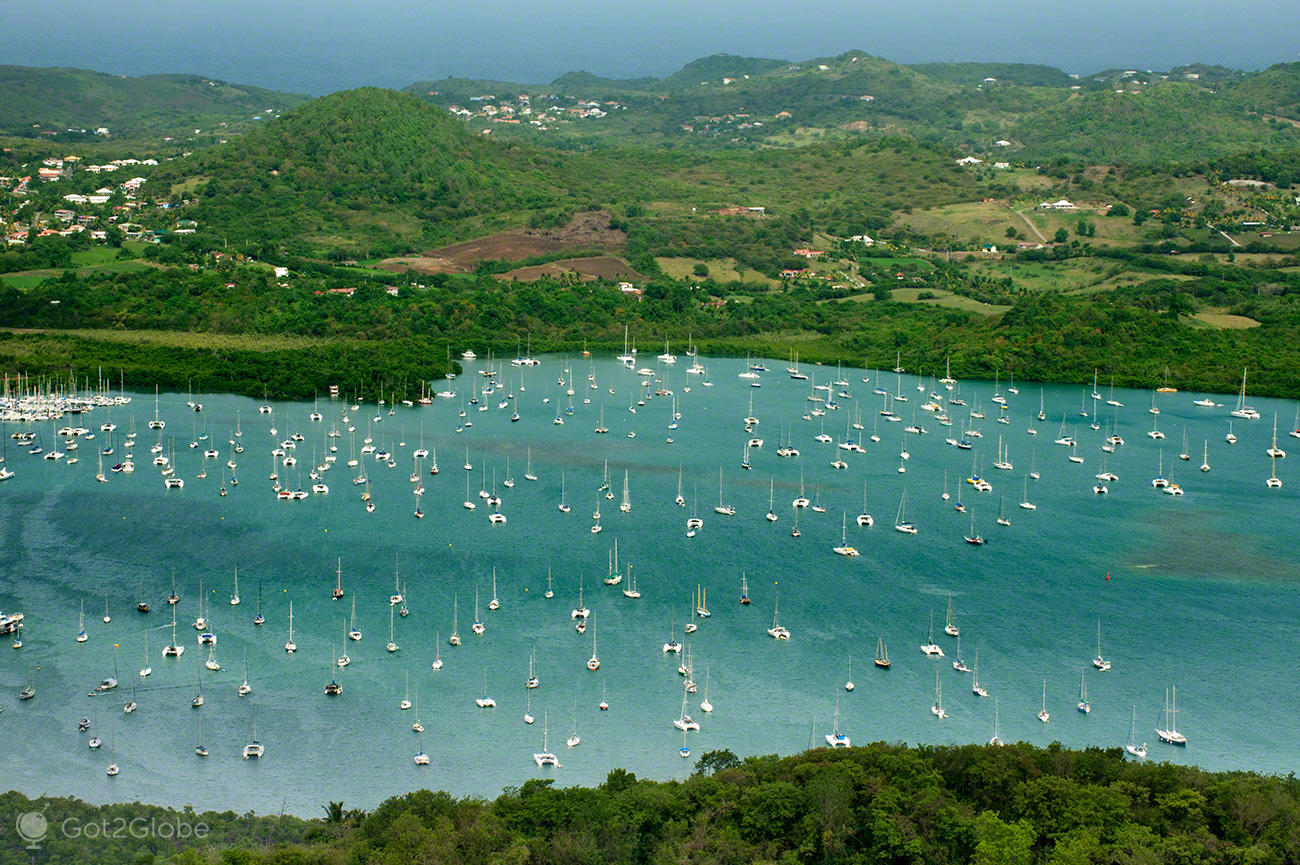
Countless small boats take advantage of the calm provided by an inlet in the south of Martinique
They make long stopovers at Départements and regions d'outre-mer.
The Colonization without Return of the Békés
Throughout the colonial history of the Antilles, many of these adventurous families arrived in Martinique and neighboring Guadalupe where they encountered a cozy atmosphere and exceptional business opportunities and living conditions.
They have not returned. They settled, occupied land, bought slaves and got rich by exporting sugar and rum.
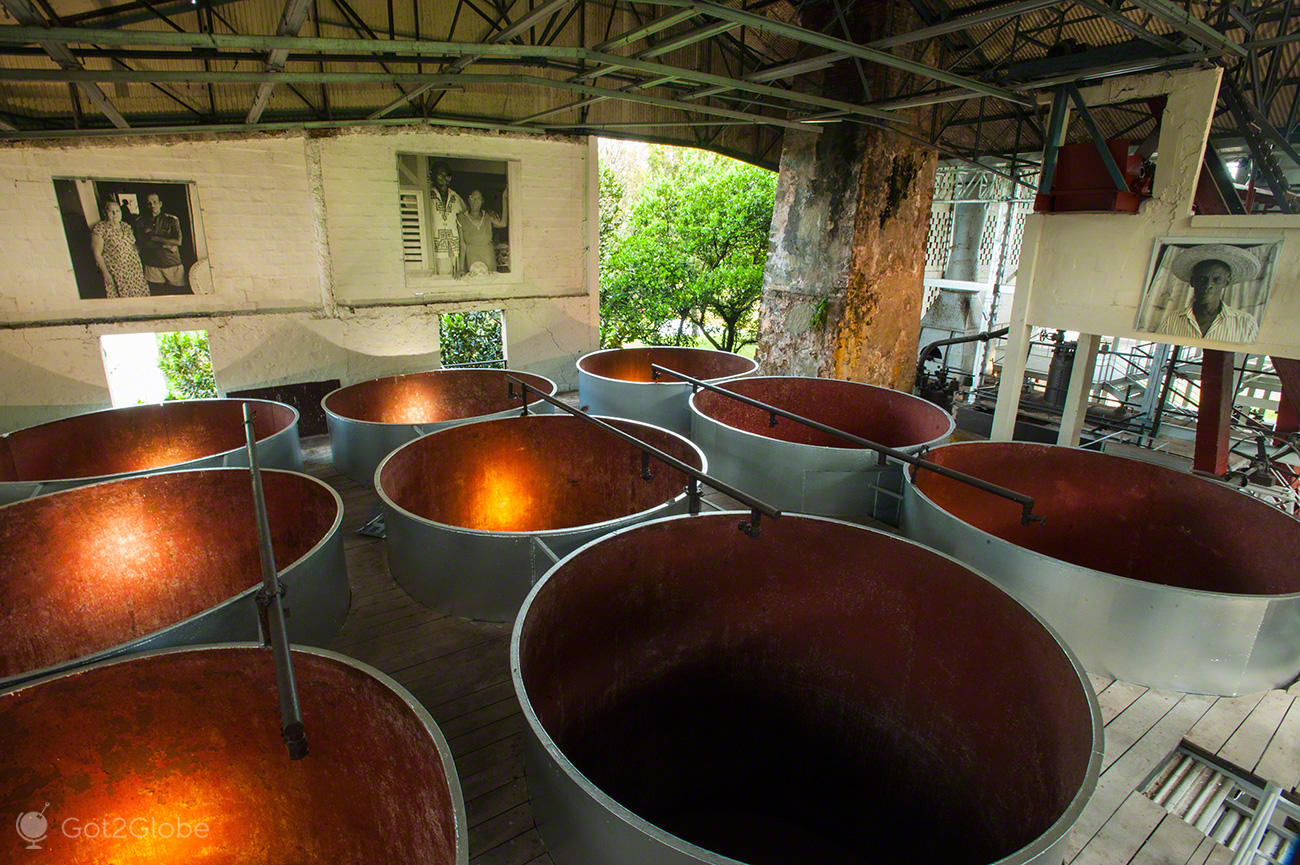
Large vats from the Habitatión Clément rum distillery.
They became known as Békés, a term with a controversial genesis. So much can come from the expression "eh bé qué?" that the first settlers adapted from “eh bien quois?”, as in the title “whites docks” (white of the docks, because the settlers control all the goods) or in the acronym BK, created to abbreviate “White Kreyol".
Whichever the real version, the Békés now constitute a tiny part of the population of Martinique (3000 out of almost 400.000 inhabitants). Even if only a few retain the status of big bosses, their “class” owns several of the most profitable companies.
They are the peaceful and regional and metropolis governments are the usual suspects whenever the cost of living on the island becomes unbearable, something that the population is used to seeing in the prices charged in many supermarkets, hypermarkets and large-scale stores in Martinique and "exported" from metropolis, cases of Carrefour, 8 à Huit, Leader Price, among others.
Today, the inhabitants are contesting the inevitable social injustices of a colony with a more than colonial, slave-owning past. They proudly assume African traditions and values, but often their famous finesse in the dialogue and assimilated treatment of the settlers.
As well as other striking expressions of Francophonie, such as the passion for cycling, petanque and others.
And Martinique's Success in the Francophone Sphere
One need only look at the number of important characters with Martiniquean origin or blood representing France – Nicolas Anelka, Abidal, Wiltord, Raphael Varane only in the world of football – to understand the seriousness of the phenomenon.
Conversely, French people who move to Martinique for good, initially just on business or on vacation, end up enjoying countless natural rewards.
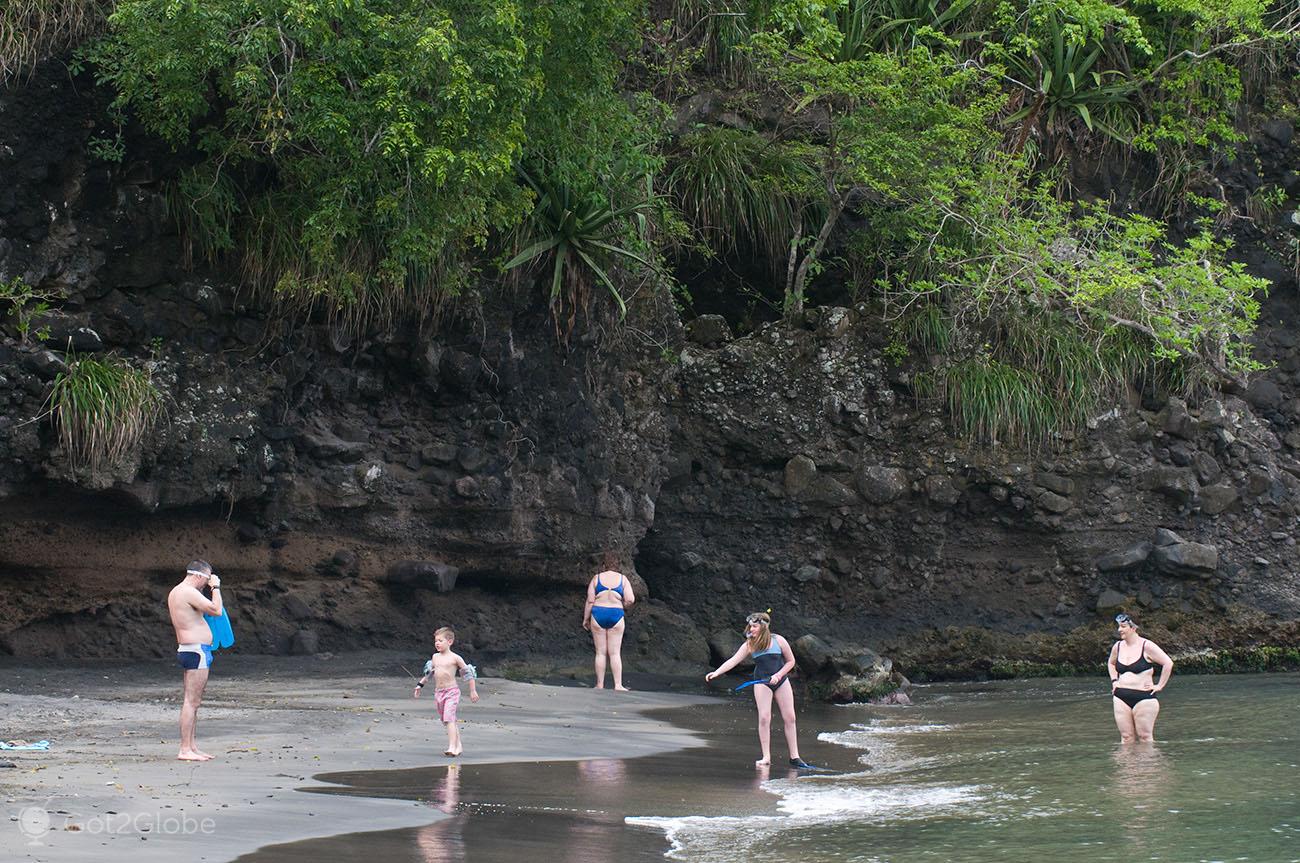
Black sand beach of one of the volcanic anses.
The island's irregular coastline hides idyllic coves and deep bays and villages with small colorful colonial churches that open onto long walkways and white or black sands such as those of the Anses d'Arlets, on the coast facing the Caribbean or of the Presqu'ile de la Caravelle, hit by the Atlantic ocean.
These are the beaches and areas of bars and sandy restaurants that the meters occupy, there for the lack of banana trees, under the palms of coconut trees, always equipped with their refrigerators, parasols and entertainment equipment. snorkeling.
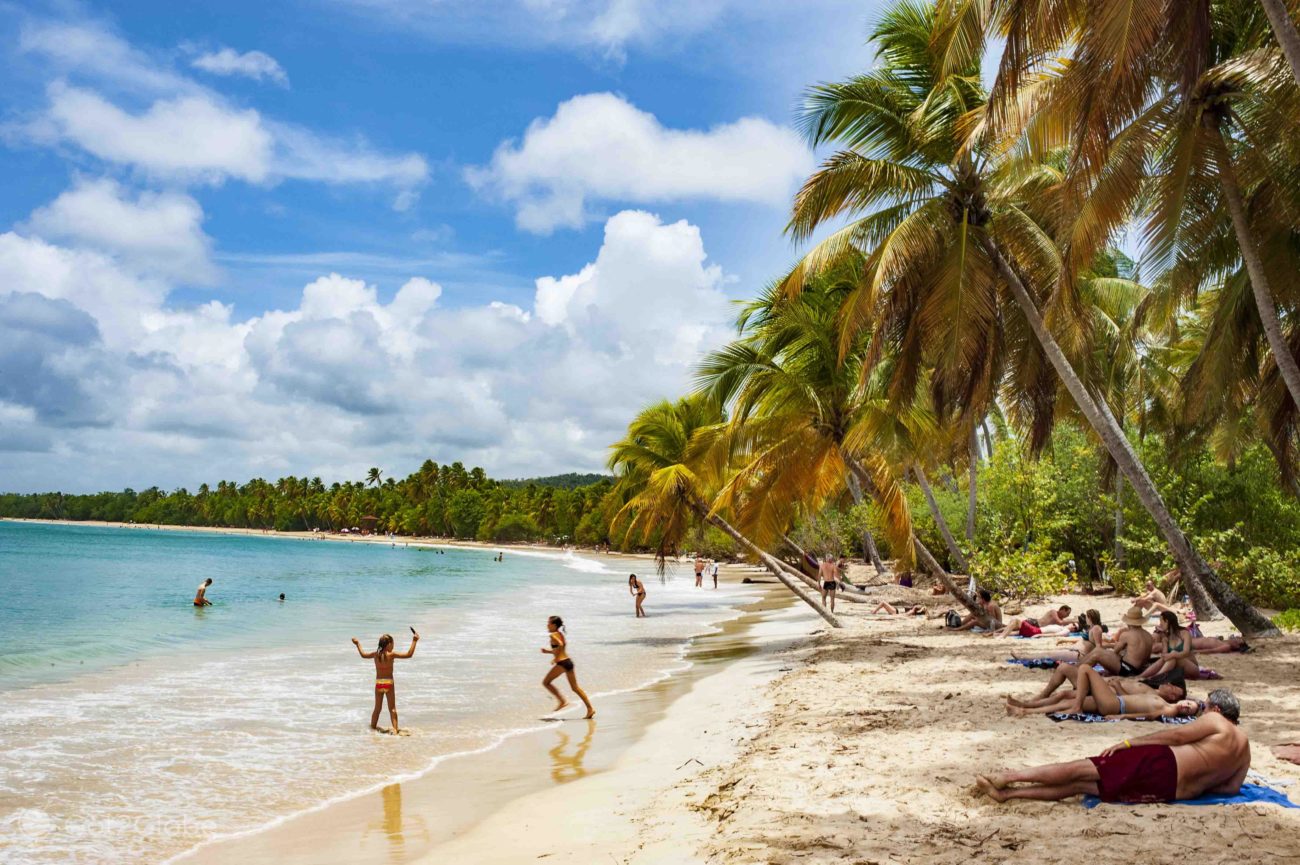
Families rest on Martinique's quiet sea beach.
They do it mainly during the holidays in Europe and from December to April, when the rain only falls from time to time.
Discovering the East Coast of Martinique
Somewhere on the east coast, between Le François and Le Robert, we passed a muddy water reservoir surrounded by grass. Without waiting for it, we find a herd of cows circling it in an unhurried line, without the shepherd who had followed in the lead trying to bring order to a stray subgroup.
Ahead, we find a new beach. The scene of families picnicking, playing sports or napping in the shade of the tropical vegetation of the sea is repeated.
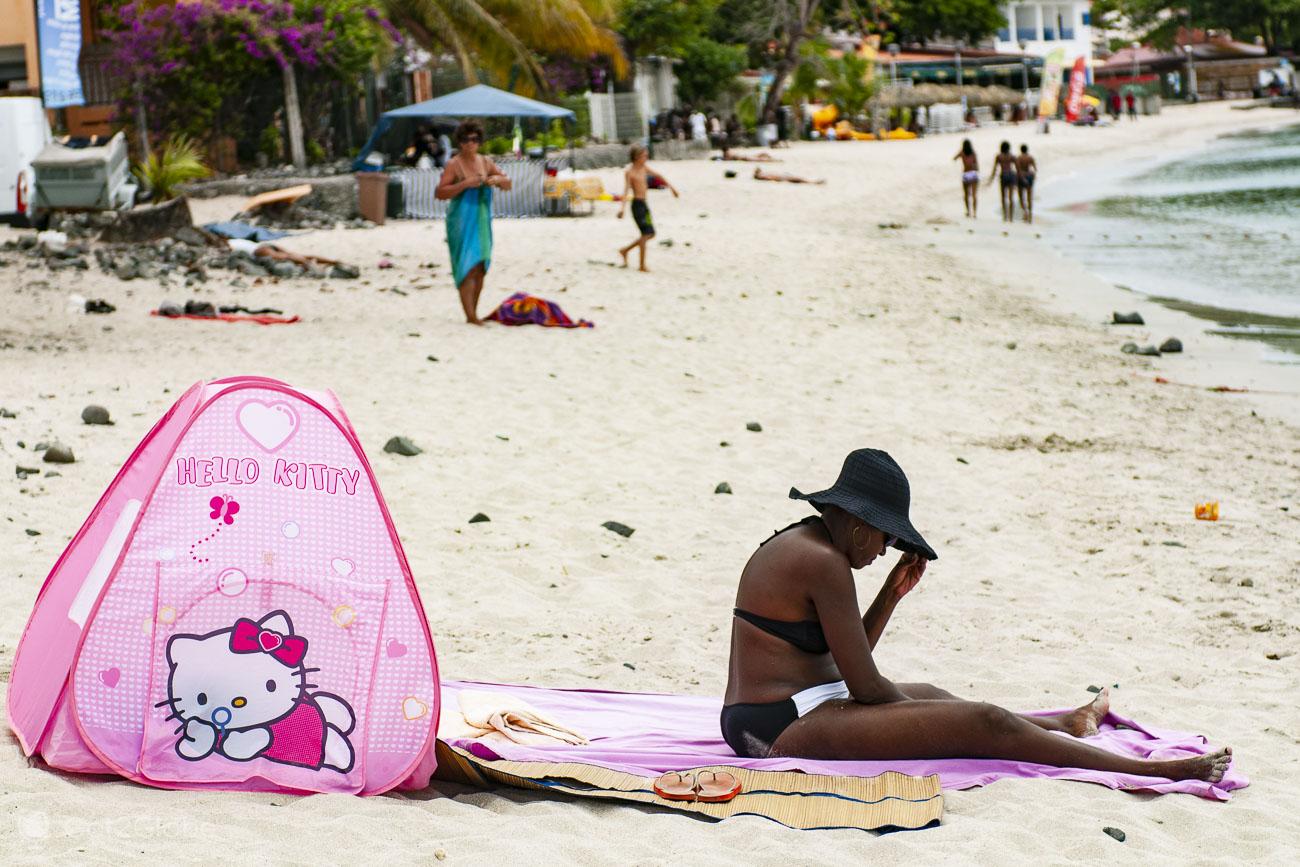
Bather on a beach in the north of the island of Martinique.
We still laughed and had fun with the improvised canoeing of a pair sui generis – one of the crew, very small white, the other very bulky black – who, equipped with paddles, does her best to compensate for the lack of sails and engine in the walnut shell in which they were following.
The Long Visit of Paul Gauguin
In a certainly less bathing way, Paul Gauguin proved to be one of the first meters seduced by Martinique. Gauguin gained notoriety thanks to paintings of Tahitian women.
And yet, it was his ancestral Peruvian ties and affinity with South America and the Caribbean that aroused his desire to escape to a wild land.
On the first attempt, he abandoned his native Paris and, in 1887, he wrote to his wife to let him know that he had left for Panama. Shortly thereafter, he was forced to work on the Canal that the French had recently designed and built.
Only some time later did he manage to settle in a cabin in Martinique, ready to paint whatever inspired him most. It was in Martinique that he transferred his first exotic landscapes to canvas and freed himself from the Impressionism of the renowned mentor Pizarro.
Gauguin was enchanted by the volcanic beauty of coves such as Anse Turin, overlooking the fascinating Pelée Mountain which, every now and then, smoked and, 15 years later, would charred Saint Pierre and the people of this village that Gauguin so admired.
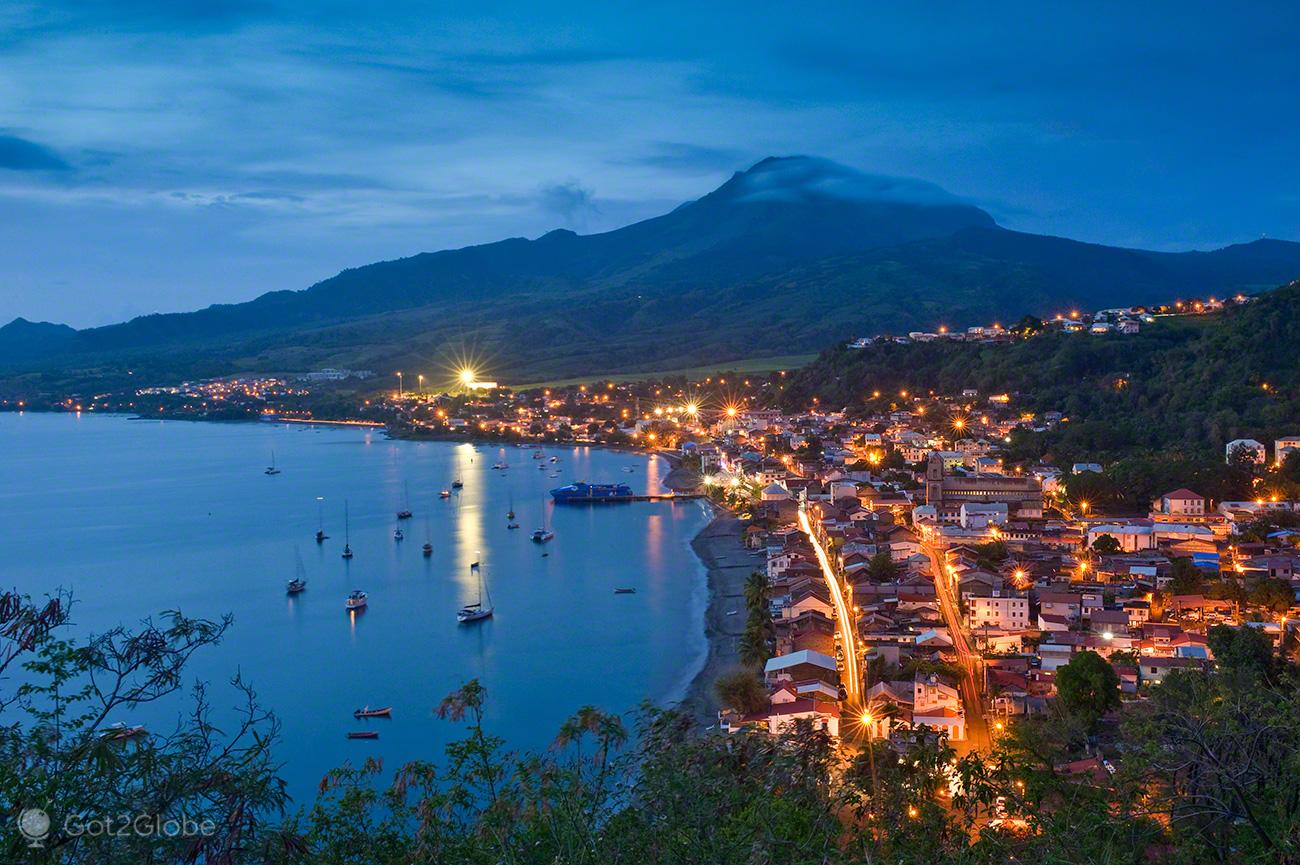
Panoramic view of Saint-Pierre at dusk.
Still in 1887, he fell ill.
He was repatriated to the Gallic metropolis where he was convalescing before returning to invest in the fascination of the distant tropics, this time in French Polynesia.
Even so, who knows if the time he spent in Martinique did not trigger the local version of one of the recurrent traumas in the French-speaking world: photophobia.
Caribbean Charm of Successive Anses
Before leaving the Grande Anse d'Anses-d'Arlets we spot two picturesque old men in a quiet conversation between a backyard and the waterfront. We ask if we can photograph them. On that occasion, we received a straightforward response: “No, sorry but no.
My sister once said yes to any tourist. Now it's all over the island's postcards. And what do we gain from it? Nothing!"
A neighbor of this old man proves more open to the idea.
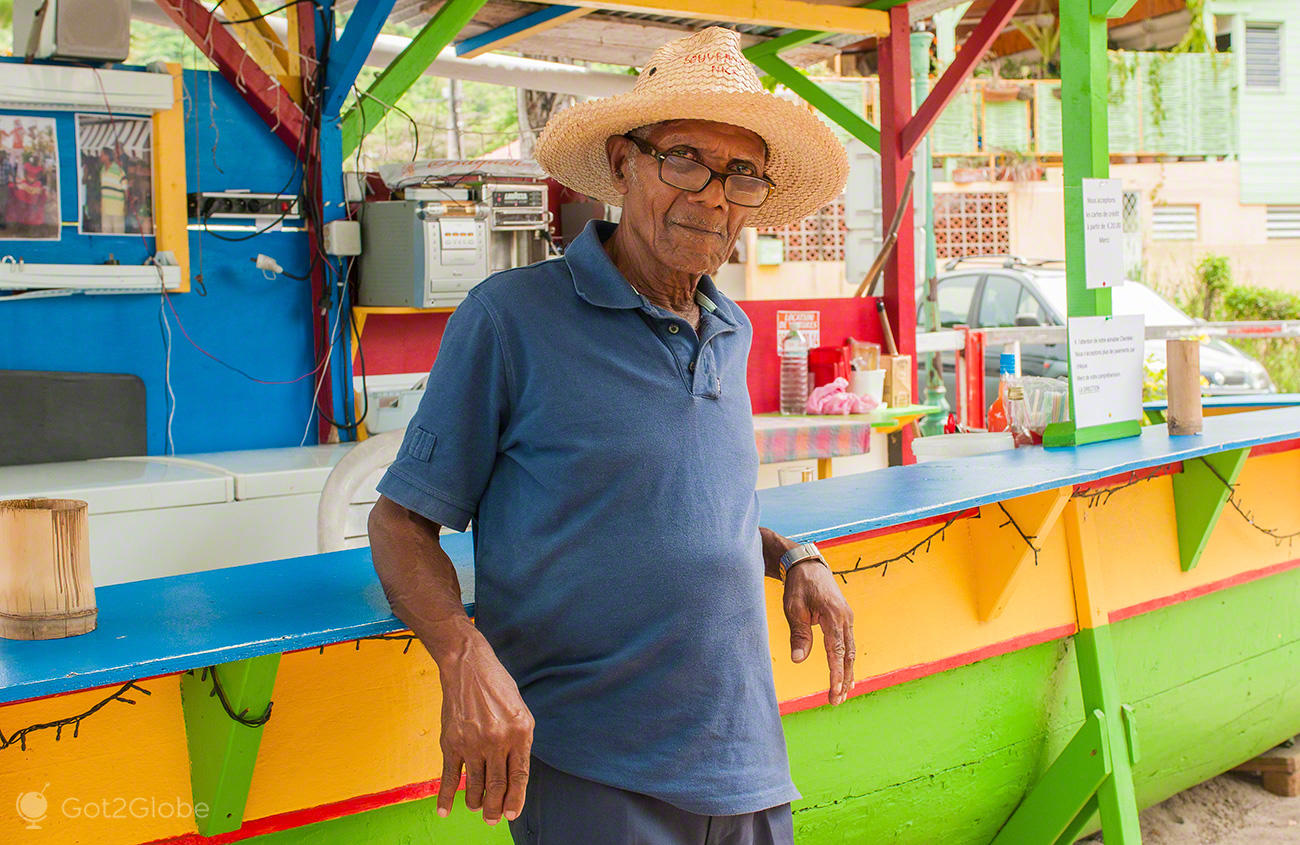
One of the brave elders of the Grande Anse d'Arlet.
Eras much more ancient than that pair of indignant people represented other injustices, these really difficult to bear and resist, just as, a few kilometers to the south, art and memory force us to reconstitute.
We arrived at Anse Caffard, close to the village of Diamant. There we find the memorial Cap 110 to slavery, erected in 1998, on the 150th anniversary of its abolition.
The sculpture was inspired by the tragic sinking of a slave ship on the treacherous offshore coast, which survived eighty forced passengers, picked up by the foreman of a nearby inn.
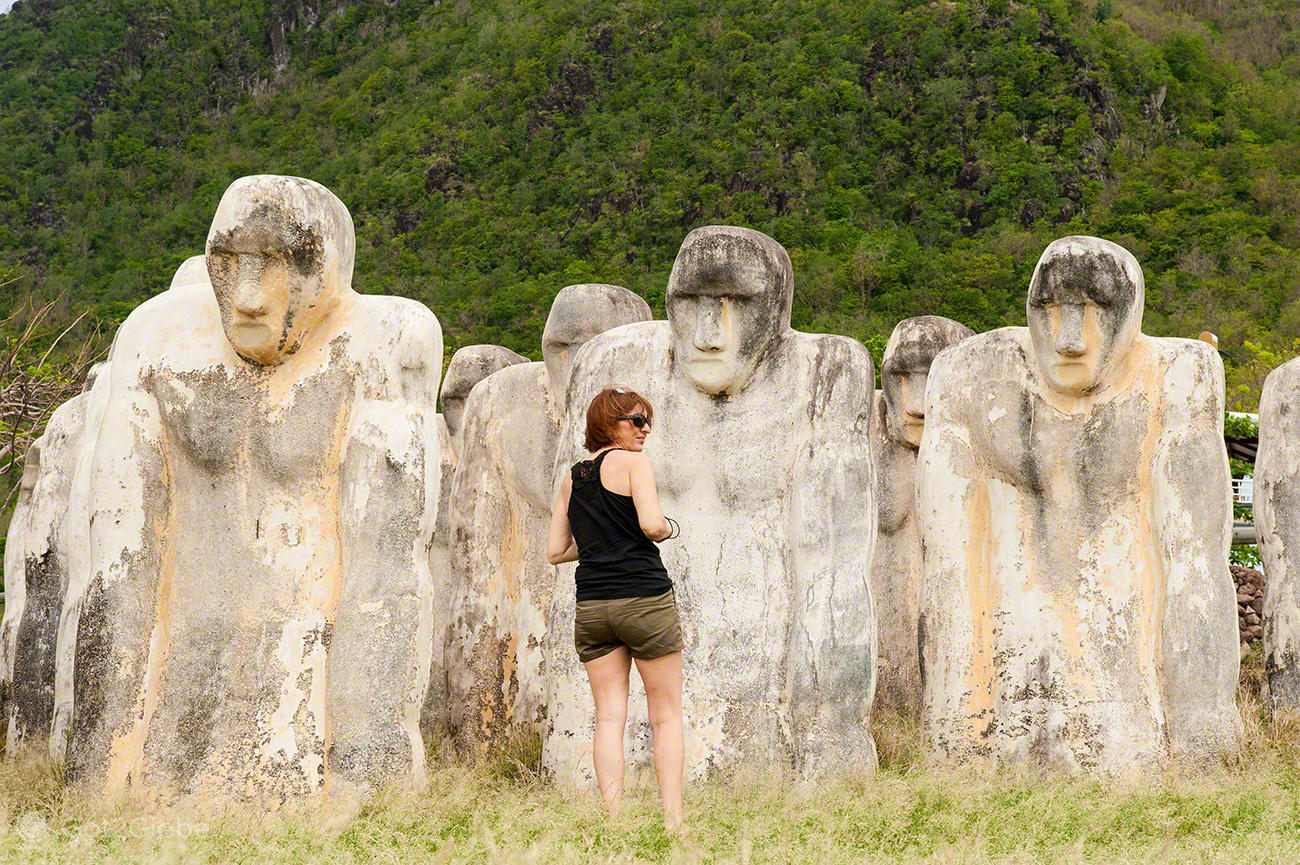
Visitor examines the Cap 110 memorial to slavery, erected 150 years after its abolition
It aligns its anonymous stone figures, facing the sea and the emblematic rock of the Diamond. Thus, it recalls the last of the shipwrecks of slave ships found in Martinique.
In a way that takes on irony as small sailboats skirt the cliff with the peace and elegance of their recreational class and prepare for moments of peace and leisure.
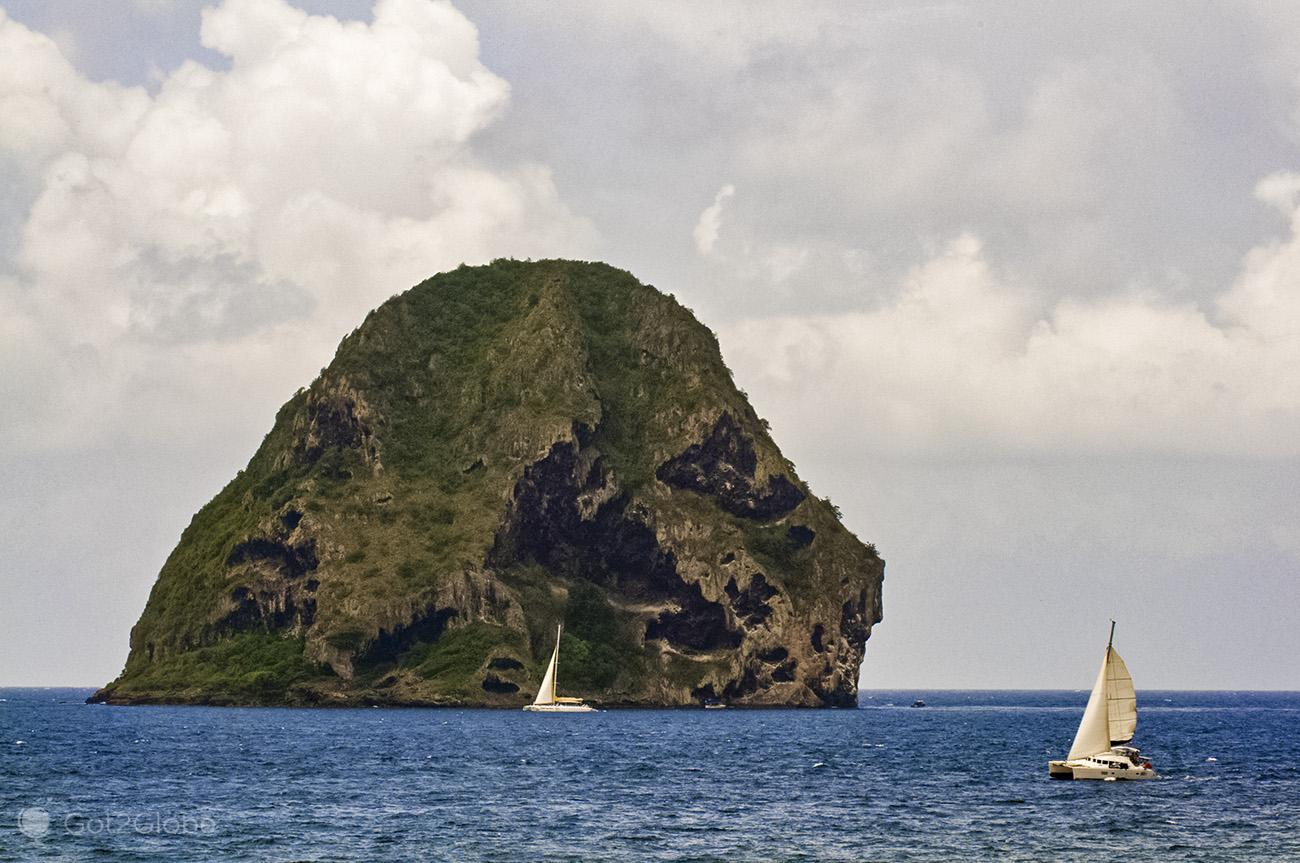
Sailboat sails in front of the Diamant rock.
Historical Rivalry with Neighbors Across the Channel
The British had long explored other islands in the Caribbean and showed interest in the Gaul overseas territories. They ended up invading Martinique in 1794. They remained until 1815.
It was a period when local farmers – including the family of Josephine de Beauharnais, the future wife of Napoleon Bonaparte, born on the island – took advantage of the opportunity to circumvent the wave of abolitionism that the French Revolution had generated and in which they sold their sugar in the market. British instead of French.
With the end of the Napoleonic Wars, the British were forced to return Martinique to the original colonists. The French Empire regained its stability. Since then, not only has it not lost the beloved colony of the Antilles, but has integrated it into the sparse and multifaceted territory of the Republic to which the French Revolution gave rise.
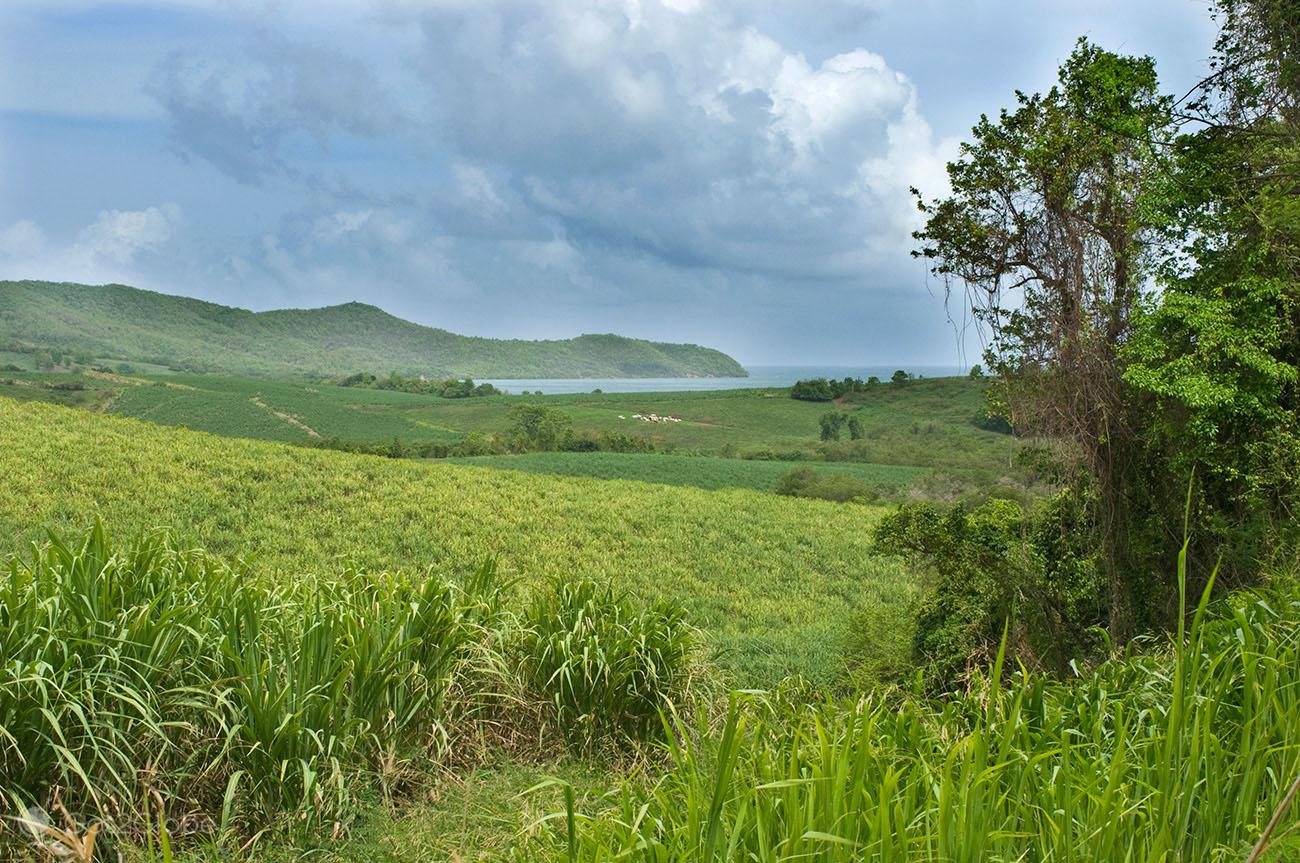
Green scenery of eastern Martinique.
For the interior, Martinique also has countless elusive charms beyond the Flores that were at the confused genesis of its name. At the beginning of which there is a record, the island was called Jouanacaera-Matinino by the Taino indigenous people of Hispaniola and only Jouanacaera by the Caribs, which meant Iguanas Island.
When Cristovão Colombo returned to it after seeing it for the first time in 1493, he triggered a process of adaptation of the names Madinina, Madiana and Matinite, which led to the current name of Martinique.
Verdant Mountains, Tropical Forest and Sugar Cane Plantations
the mountain range of Pitons of Carbet rises to 1100 meters. It is covered by lush vegetation that, depending on the altitude, has ferns, vines and even forests of bamboo, mahogany and rosewood.
These areas are too bleak for that purpose, but other vast areas of the island are covered with pineapple plantations.
And, above all, sugarcane, its historical production par excellence and the reason for being of countless residential (read farms) which, from the XNUMXth century onwards, processed sugar and distilled rum in industrial quantities, thus ensuring the fortunes of their owners.
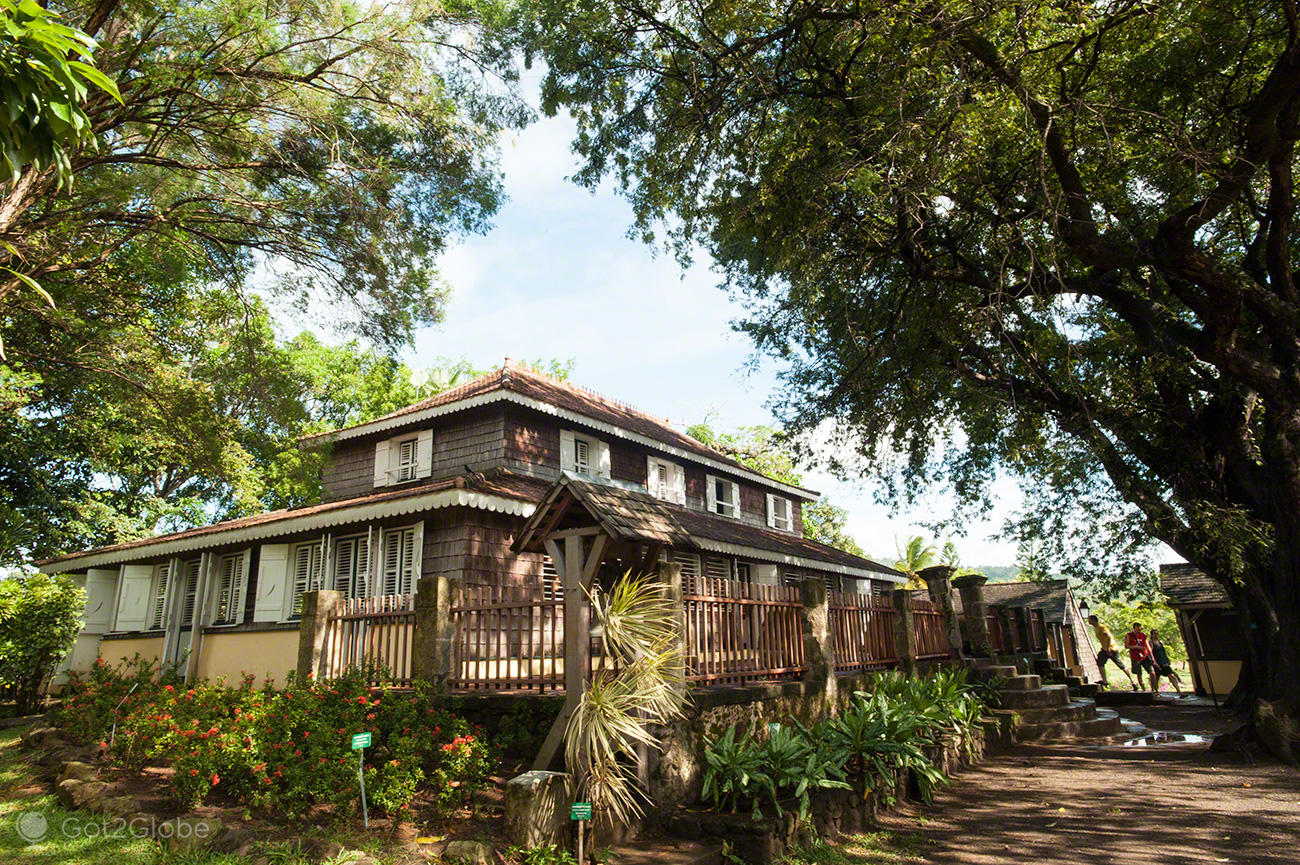
Building of Habitation Clément, a famous historical rum producer.
Today, the real estate and cultural heritage of these properties is part of the island's inalienable heritage. We appreciate it in one of the most emblematic, Clément Domaine de L'Acajou.
We also taste it in attractive street stalls or beachside stands filled with bottles of all colors. More than a Martinique identity, the Planter animates hearts and brings differences closer together.
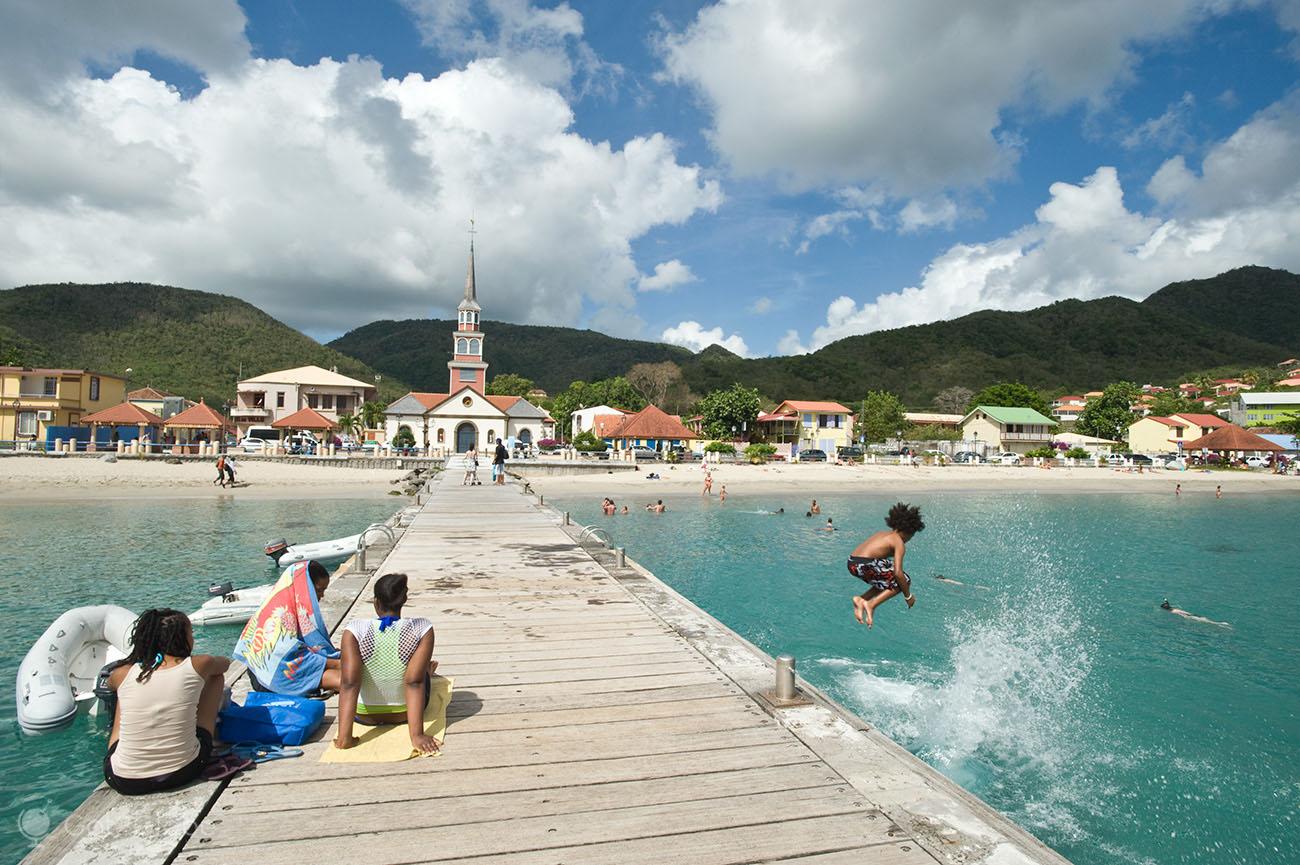
Residents share the long jetty of Anse d'Arlet.
Delicious Rum in Fashion Planter
Jean-Toti is as fully aware of this as he is of his liar's teeth.
As we taste his fruit rum in search of the most stimulating aromas and flavors, he makes a point of serving us countless mini-shots and feeding a lively cavaqueira.
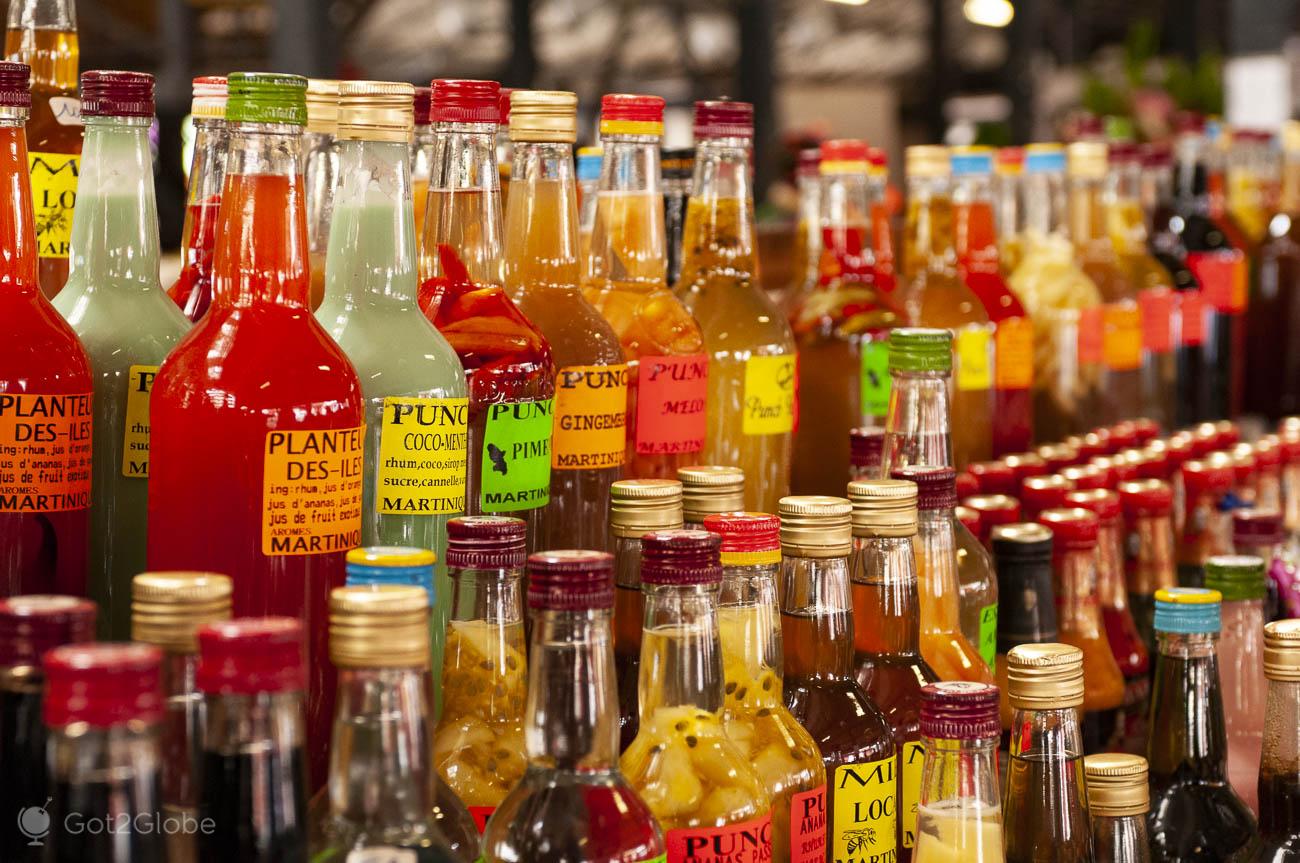
Stall full of bottles of planteur rum.
When we finish the round, we have the horrible feeling that we all like everyone equally. “Well, I'll be the one to pick you some bottles, right?
You don't need to tell me more, I'm used to supporting customers in these dramas, especially the newcomers from Europe who land without any resistance to our ointment. By the way, I even have another precious suggestion for you.
Don't go already! Sit down next door. Eat something, send some dips. Enjoy life without inhibitions, there will be few places even in the Caribbean where you will find a two-in-one of the best of ours and yours.”










